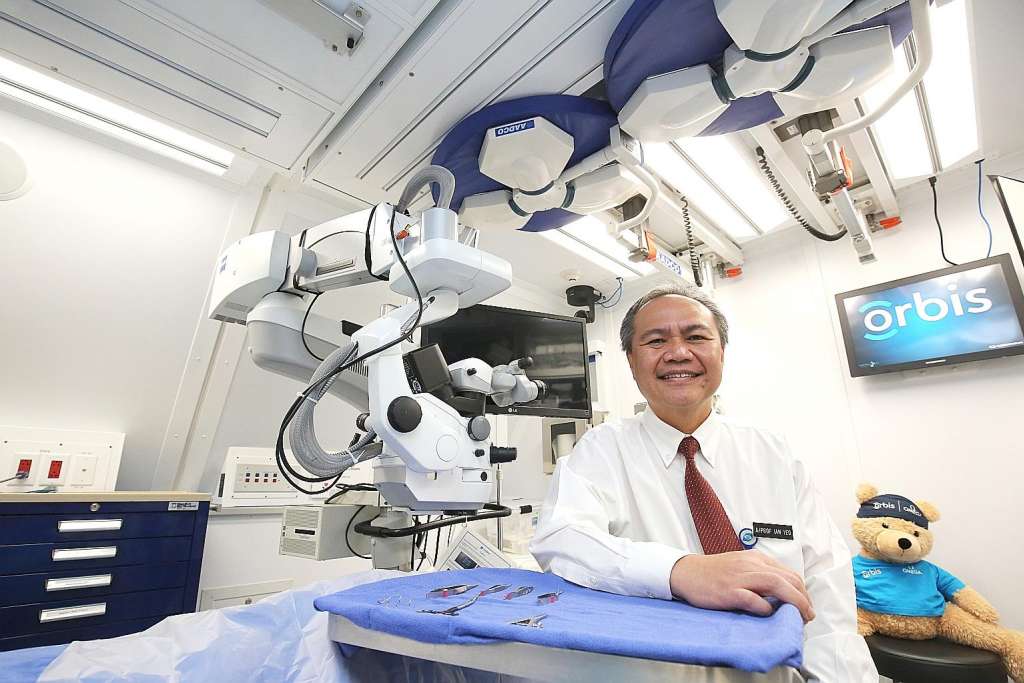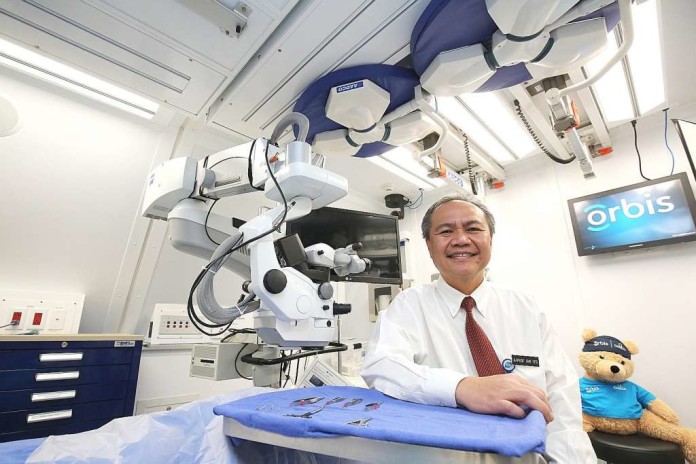A number of Singapore’s top eye specialists owe their rise in part to a “Flying Eye Hospital” which has been making stops in the Republic since the 1980s.
Today, Singapore physicians are paying it forward by volunteering with Orbis, the international non-profit organisation which provided them a chance to learn from some of the best in the field.
The charity organisation, which was founded by an American ophthalmologist in 1982, aims to fight blindness by training healthcare professionals from developing countries in the area of eye care. It does so through its Flying Eye Hospital, which has state-of-the-art healthcare equipment on board as well as a classroom, and has travelled to 92 countries worldwide.
Among the eight eye specialists who have volunteered with Orbis is Associate Professor Ian Yeo, Deputy Medical Director (Education) at the Singapore National Eye Centre. In 1996, he was a trainee who spent some time on board Orbis and learnt from renowned ophthalmologists Steve Charles and Richard Spaide.
In September, Prof Yeo went to Shenyang, China, to teach doctors there how to treat eye conditions such as age-related macular degeneration and diabetic retinopathy – the most common cause of vision loss among people with diabetes.
“(In) Shenyang, the hospitals are there but the services and equipment they have in the hospitals are very rudimentary. The doctors are very eager to learn… By training and teaching them, they can go back and continue to improve,” said Prof Yeo.
The plane acts like a “one-stop service” for patients who live in developing countries, he added.
Each trip lasts about three weeks and during the trip, healthcare professionals are invited on board to learn, while those who cannot afford treatment are able to get the operations they need.
Orbis has a team of 22 staff who fly with the Flying Eye Hospital. They comprise nurses and biomedical engineers, among others, who are also certified flight attendants. The plane makes about six to eight trips a year.
According to the World Health Organisation, 285 million people in the word are visually impaired. Yet, about 80 per cent of these cases can be prevented or cured.
The charity focuses on training medical professionals from developing nations in the area of eye care, and surgical procedures are conducted with that aim in mind, said director of Orbis Singapore, Ms Amy Tan.
Last year alone, Orbis trained over 1,000 doctors and 28,000 others in related fields, such as nurses and biomedical engineers, through its programmes.
It has also carried out over two million eye screenings and examinations for adults on the Flying Eye Hospital and at partner institutions.
Its latest third-generation plane – an MD-10 donated by FedEx – boasts a 46-seat classroom, an operating room as well as a patient care and laser treatment room, among other features.
The new plane also has live broadcast capabilities that will better train doctors and nurses with live footage in 3D. An average of five eye procedures are conducted each day, with each of them meant to be a case study for healthcare professionals on board.
Said Orbis International’s chief development officer Paul Forrest: “Our launch of this new third-generation Flying Eye Hospital not only marks a new chapter in our shared sight-saving journey, but also brings us a significant step closer to our dream of eliminating avoidable blindness forever.”
- 285m
Number of people in the world who are visually impaired, according to WHO. Yet, 80 per cent of these cases can be prevented or cured.
1,000
Number of doctors Orbis trained last year.

This article was first published on Dec 10, 2016.
Get a copy of The Straits Times or go to straitstimes.com for more stories.







